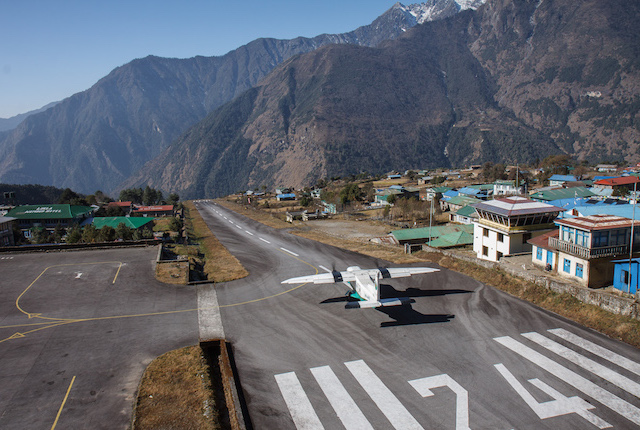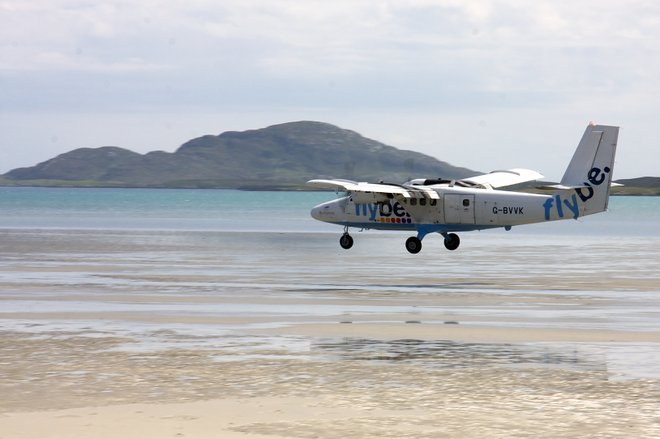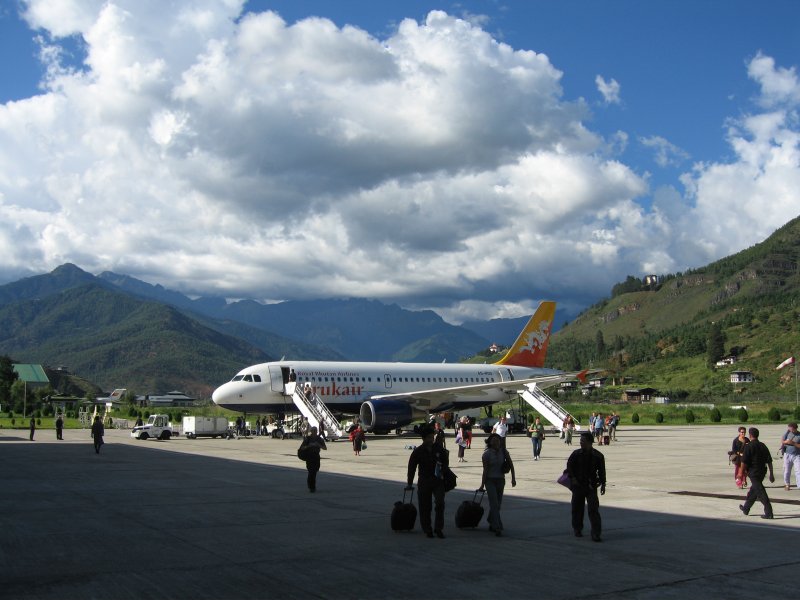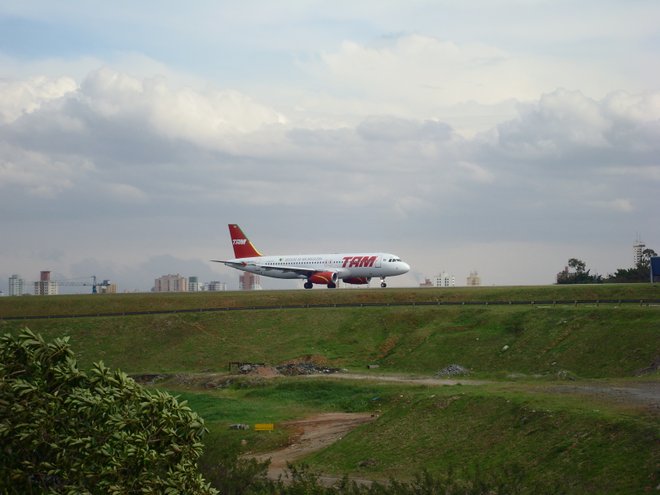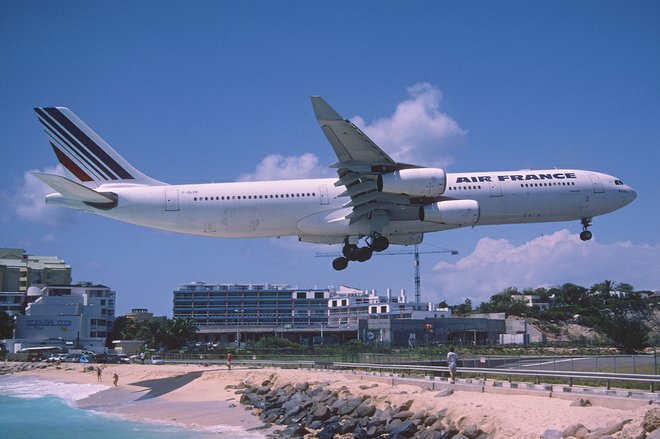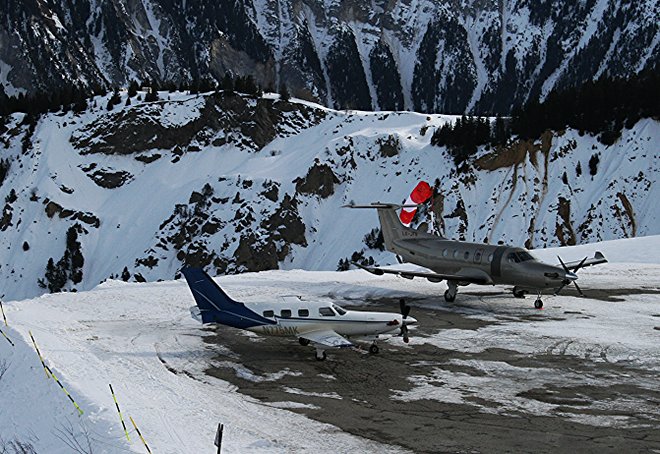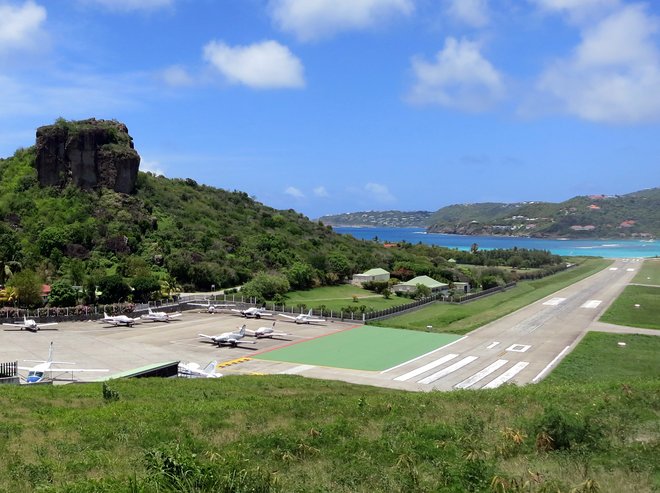While flying may be the safest way to travel, many airports are located in treacherous places that will make you shudder (think landing strips built in the middle of the Himalayas or on the edge of an island). However, keep in mind that just because these takeoffs and landings are stomach-churning, the airports themselves have not caused numerous crashes. In fact, the pilots who use these airports often need special certification to compensate for its challenges. Below, we rounded up nine of the scariest airports in the world.
Notice: Undefined offset: 4 in /nas/content/live/stagingstmllc/wp-content/plugins/smartertravel-shared/includes/ads/includes/api.php on line 92
Notice: Undefined offset: 5 in /nas/content/live/stagingstmllc/wp-content/plugins/smartertravel-shared/includes/ads/includes/api.php on line 92
Notice: Undefined offset: 6 in /nas/content/live/stagingstmllc/wp-content/plugins/smartertravel-shared/includes/ads/includes/api.php on line 92
Notice: Undefined offset: 4 in /nas/content/live/stagingstmllc/wp-content/plugins/smartertravel-shared/includes/ads/includes/api.php on line 98
Notice: Undefined index: pass_through_args in /nas/content/live/stagingstmllc/wp-content/plugins/smartertravel-shared/includes/ads/includes/api.php on line 158
Notice: Undefined index: wrapper in /nas/content/live/stagingstmllc/wp-content/plugins/smartertravel-shared/includes/ads/includes/api.php on line 159
Notice: Undefined offset: 4 in /nas/content/live/stagingstmllc/wp-content/plugins/smartertravel-shared/includes/ads/includes/api.php on line 92
Notice: Undefined offset: 5 in /nas/content/live/stagingstmllc/wp-content/plugins/smartertravel-shared/includes/ads/includes/api.php on line 92
Notice: Undefined offset: 6 in /nas/content/live/stagingstmllc/wp-content/plugins/smartertravel-shared/includes/ads/includes/api.php on line 92
Notice: Undefined offset: 4 in /nas/content/live/stagingstmllc/wp-content/plugins/smartertravel-shared/includes/ads/includes/api.php on line 98
Notice: Undefined index: pass_through_args in /nas/content/live/stagingstmllc/wp-content/plugins/smartertravel-shared/includes/ads/includes/api.php on line 158
Notice: Undefined index: wrapper in /nas/content/live/stagingstmllc/wp-content/plugins/smartertravel-shared/includes/ads/includes/api.php on line 159
Notice: Undefined offset: 4 in /nas/content/live/stagingstmllc/wp-content/plugins/smartertravel-shared/includes/ads/includes/api.php on line 92
Notice: Undefined offset: 5 in /nas/content/live/stagingstmllc/wp-content/plugins/smartertravel-shared/includes/ads/includes/api.php on line 92
Notice: Undefined offset: 6 in /nas/content/live/stagingstmllc/wp-content/plugins/smartertravel-shared/includes/ads/includes/api.php on line 92
Notice: Undefined offset: 4 in /nas/content/live/stagingstmllc/wp-content/plugins/smartertravel-shared/includes/ads/includes/api.php on line 98
Notice: Undefined index: pass_through_args in /nas/content/live/stagingstmllc/wp-content/plugins/smartertravel-shared/includes/ads/includes/api.php on line 158
Notice: Undefined index: wrapper in /nas/content/live/stagingstmllc/wp-content/plugins/smartertravel-shared/includes/ads/includes/api.php on line 159
Notice: Undefined offset: 4 in /nas/content/live/stagingstmllc/wp-content/plugins/smartertravel-shared/includes/ads/includes/api.php on line 92
Notice: Undefined offset: 5 in /nas/content/live/stagingstmllc/wp-content/plugins/smartertravel-shared/includes/ads/includes/api.php on line 92
Notice: Undefined offset: 6 in /nas/content/live/stagingstmllc/wp-content/plugins/smartertravel-shared/includes/ads/includes/api.php on line 92
Notice: Undefined offset: 4 in /nas/content/live/stagingstmllc/wp-content/plugins/smartertravel-shared/includes/ads/includes/api.php on line 98
Notice: Undefined index: pass_through_args in /nas/content/live/stagingstmllc/wp-content/plugins/smartertravel-shared/includes/ads/includes/api.php on line 158
Notice: Undefined index: wrapper in /nas/content/live/stagingstmllc/wp-content/plugins/smartertravel-shared/includes/ads/includes/api.php on line 159
Lukla Airport, Nepal
Any traveler who wants to climb Mt. Everest will likely need to fly into Lukla Airport. The only other option is an 11-hour bus ride from Kathmandu that extends into a five-day hike. Pilots only have 1,729 feet to work with, meaning takeoffs and landings have to be quick. Plus, the tarmac is on an 11-degree slope, leaving little margin for error. The cliff at the end of the runway overlooks a 2,000-foot drop. At the other end is a stone wall, so automatic controls can’t be used for landing or takeoff. Visual cues are best for properly navigating the Himalayan peaks. At this high elevation — 9,334 feet — a good sense of the ever-changing wind patterns and weather is vital for a steady landing. How bad does the weather get? In 2011, the fog was so thick around the airport that thousands of climbers were stranded for weeks. Fun fact: Lukla’s airstrip was first built by climber Sir Edmund Hillary in the 1960s, yet only paved over in 2001.
Barra Airport, Scotland
One of the only airports in the world that regularly uses a beach for landings, Barra has three runways that are usually under water at high tide. The airport is located at the northern end of Barra island in the Outer Hebrides, Scotland. Traigh Mhòr (“Big Beach”), the airport’s setting, is known for its green hills and white sand. Twin Otter planes are typically used to carry travelers in and out of Barra, and takeoff can be as quick as six seconds. Just be careful if you’re walking on the beach — one of the only ways to know if a plane is arriving is to check the airport’s windsock.
Paro Airport, Bhutan
Located in a Bhutan valley surrounded by 18,000-foot peaks, Paro Airport has such a perilous flight path that only a handful of pilots are certified to land a plane on one of its runways. What makes it so difficult? The curves of those mountains mean a pilot must trust the visual landmarks and will only see the runway at the last minute. Planes taking off or flying in must be extremely maneuverable, high-climbing, and not require refueling (the airport has minimal infrastructure). Landing is only allowed during daylight hours, and modern autopilot equipment is useless since the airport has no radar. When the pilot circles around the last ridge before touchdown, the aircraft must be 100 feet off the ground and ready to land in seconds.
Matekane Air Strip, Lesotho
https://www.instagram.com/p/BHvHIWPAMZD
Don’t expect duty-free shopping or an expansive food court at Matekane. From the sky, this “airport,” located in the South African country of Lesotho, looks more like someone etched a runway on the top of a cliff. It’s mostly used by charity workers who need to access remote villages. Those who visit need to come with concrete stomachs. The 1,312-foot tarmac, one of the shortest in the world, ends in a gully with a 2,000-foot drop. For pilots, that means there isn’t an adequate amount of room to gain speed to soar over the nearby mountains. Instead, the plane reaches the end of the airstrip and must drift downward into the ravine until the engine has enough thrust to start climbing.
Congonhas Airport, Sao Paulo
When Congonhas Airport was built in the 1930s, its two landing strips sat comfortably at the edge of Sao Paulo. Now that the city has grown up and out, Congonhas looks like a tiny putting green planted between miles of skyscrapers. The mountains and fog around Sao Paulo have always made landing a plane at the airport challenging, particularly at night. Drainage problems often give the short runways a slippery film, causing some planes to skid off the tarmac. One night in July 2007, the crew lost control of the aircraft and tragically crashed into a warehouse, killing 187 passengers and 12 people on the ground. Needless to say, if you’re booking a flight into Congonhas, opt for a daytime landing.
Princess Juliana International Airport, St. Maarten
Depending on your opinion of dramatic entrances, you’ll think the position of Princess Juliana International Airport’s Runway 10 is either absurd or awesome. The beginning of the tarmac is so close to the edge of the island that planes must approach over water, which can confuse the pilot about how high the wheels are from the surface. When arriving and departing, planes fly over St. Maarten’s Maho Beach at less than 100 feet off the ground. That said, Princess Juliana Airport has only had a few major incidents. The most recent involved a plane-spotter who was watching a takeoff in 2017. The individual was standing at a fence in between the beach and the airport when a jet engine blast pushed her to the ground so hard that she hit her head and died. Anyone planning to visit the Dutch side of St. Maarten will likely see Princess Juliana Airport and get a close-up aerial view of Maho Beach.
Courchevel Altiport, Courchevel, France
Built to service the nearby winter resort, the runway at Courchevel Altiport is so steep and icy that you could almost use it for a ski jump. Most of the planes that fly here are fixed-wing aircrafts and the pilots must be specifically certified to land. Not only is the short tarmac surrounded by mountainous terrain, the pavement has no lights embedded into it, meaning pilots must rely on a combination of gumption and know-how. The gradient of the runway is utilized by pilots to slow down on arrival and speed up on departure. Fun fact: If you’ve ever seen the opening scene of the James Blond flick “Tomorrow Never Dies,” you’ve gotten a glimpse of how treacherous this arrival can be.
Copalis State Airport, Washington
https://www.instagram.com/p/BfEXOSCHXel
Don’t look for a blacktop runway at Copalis State Airport. Here, planes land on a sandy beach. It’s the only “airport” in Washington state where pilots can legally drop their craft oceanside. How do you know you’re on the runway? Simple — it starts at the Copalis River and stretches up to the rocks about a mile north. Oh, and the runway is only available during low tide. Once those wheels touch down, be sure to do a little clam digging.
Gustaf III Airport, Saint-Barts
If an arriving pilot overshoots the runway of Gustaf III Airport, his or her plane could wind up directly in the Bay of St. Jean. The tarmac is on a slope that runs about 2,000 feet onto the beach and then into the water. Pilots need special certification to land at this airport, which can be particularly treacherous on windy days. Before landing, a plane making its final turn over the Col de la Tourmente neighborhood will only be about 30 feet off the ground. Plane-spotters love to get close to the runway, which they can since there isn’t much fortification around the airstrip. In 2001, a plane clipped the top of a house in Col de la Tourmente and wound up crashing, killing 19 people onboard and one on the ground. However, crashes aren’t common.
You’ll Also Like:
- 5 of the Scariest Hotel Pools in the World
- The 7 Scariest Cliff Diving Spots in the World
- 6 Roads Around the World That Are More Dangerous Than You Think
All products are independently selected by our writers and editors. If you buy something through our links, Oyster may earn an affiliate commission.
